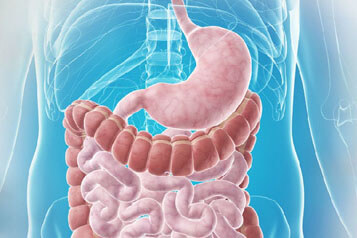
Gastroenterology & Endoscopy
Doctor at Venkateshwar Hospitals have the experience & expertise to handle the most challenging and complex surgical cases related to gastroenterology with a top-notch degree of skill, expertise, and dexterity. They offer treatment for both benign and malignant conditions of the liver, gallbladder, bile ducts, stomach small intestine and colon.
Symptoms such as the following will always find a conclusive treatment plan with us:
• Abdominal Pain
• Abdominal distension
• Ulcer Dyspepsia
• Symptoms related to difficulty in swallowing
• Vomitings
• Haematemesis
• Constipation
• Diarrhoea
• Bleeding in the stools
• Heartburn
• Indigestion
• Jaundice
• Weight Loss
• Unexplained / frequent occurrences of Anemia
• Hiccups
• Inflammatory Bowel Disease (like Ulcerative Colitis & Crohn’s disease)
• Irritable Bowel Syndrome

Diagnostic endoscopy at Venkateshwar Hospital
What is a diagnostic endoscopy?
Diagnostic endoscopy might be recommended to investigate symptoms including: long term and severe abdominal pain, difficulty swallowing (dysphagia), non-heart related chest pain, continued nausea and vomiting and vomiting blood, blood in stools, persistent diarrhoea, and unexplained weight loss.
An endoscope is a long, thin, flexible tube with a camera and light source at one end. It is inserted into your body through natural openings such as your mouth or anus and send images of the inside of your body to a monitor for your surgeon to see. There are different types of endoscopies. Those related to the general surgery discipline include:
Gastroscopy
A gastroscopy looks inside your oesophagus, stomach and upper part of your small intestine (duodenum). It is also called an upper gastrointestinal endoscopy.
A gastroscopy is performed to investigate symptoms such as: indigestion, heartburn, continued abdominal pain, persistent vomiting, vomiting blood, difficulty swallowing, unexplained weight loss, or anaemia.
Many conditions can be diagnosed using a gastroscopy including: stomach ulcers, gastro-oesophageal reflux disease (GORD) and Barrett's oesophagus, coeliac disease, and early signs of cancer.
A gastroscopy can also be used to treat some conditions such as a bleeding ulcer, a blocked oesophagus, a polyp and small cancerous tumours.
It’s an outpatient procedure, performed usually under local anaesthetic and takes just 15 minutes for a diagnostic gastroscopy. The endoscope is inserted through your mouth and passes down to your stomach. Treatment using a gastroscopy, called therapeutic gastroscopy, takes longer.

Colonoscopy
A colonoscopy looks inside your colon including your bowel and rectum. It is used to investigate symptoms such as: bleeding from your back passage (anus), pain in your lower abdomen, persistent diarrhoea, and any other symptoms suspected to be coming from your colon.
It can diagnose: inflammatory bowel diseases such as Ulcerative colitis and Crohn's disease, diverticulitis, bowel polyps and bowel cancer.
A colonoscopy is a day case procedure that takes around thirty minutes to perform. The flexible tube is inserted through your anus so that your surgeon can see the lining of your colon. Sometimes a small sample of tissue is taken for further analysis, known as a biopsy.

Flexible sigmoidoscopy
During a flexible sigmoidoscopy, your surgeon will use a sigmoidoscope to examine the lower part of your large intestine (sigmoid colon), take tissue samples (biopsies) and remove polyps. It is also used as part of the bowel cancer screening programme.
It’s an outpatient procedure that takes up to fifteen minutes to perform. The flexible sigmoidoscopy is inserted through your anus and takes images of your colon.